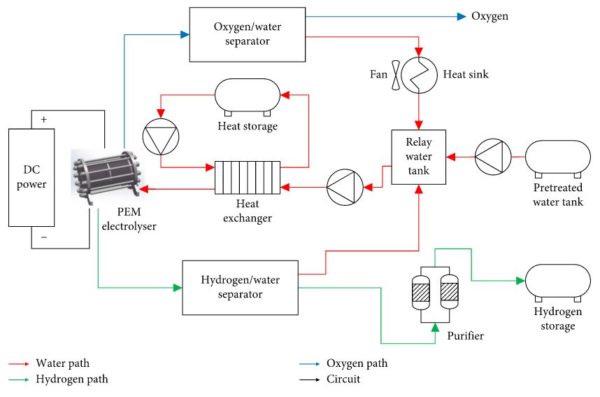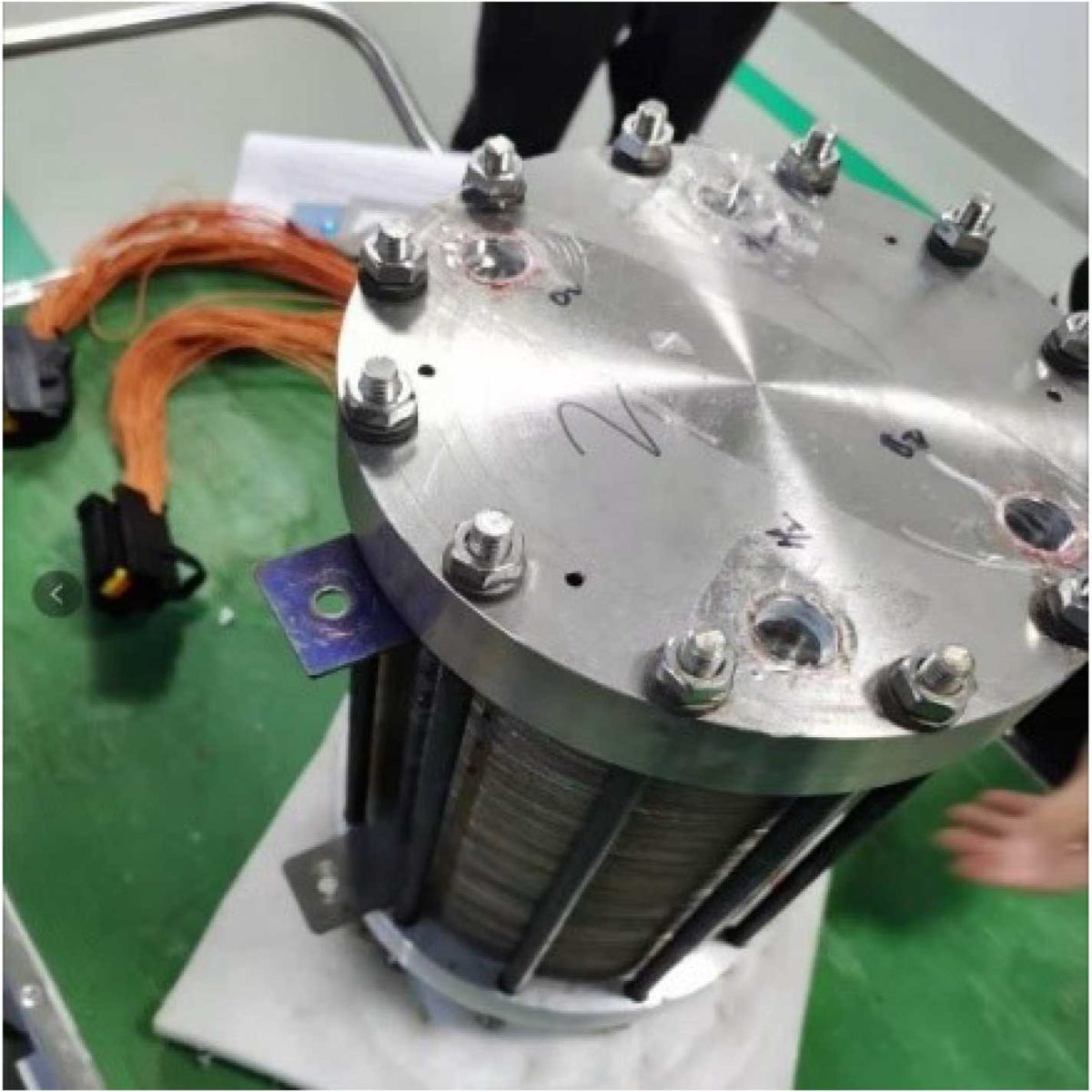A research group from China has shown how proton exchange membrane (PEM) electrolysis could be combined with thermal energy storage to maintain a high-efficiency operating range for electrolyzers when renewable energy is connected to hydrogen production systems.
PEM electrolyzers cannot maintain stable operating temperatures as input power changes, as the polarization curve distorts with the change of temperature.
“This work proposes a PEM electrolyzer coupled with the thermal energy storage device to meet power fluctuation and frequent start and stop caused by renewable resources,” the scientists said.

The proposed system consists of a 60 kW PEM electrolyzer, a water separation subsystem, a purification subsystem, a heat storage subsystem, a pressurizing subsystem, and a controlling and monitoring subsystem. It can operate in normal mode and power fluctuation mode.
“A throttle valve is used to reduce pressure at the outlet of the oxygen path,” the team said. “Concentration detection and alarm devices are also installed around the platform to ensure the test safety.”
The water separation subsystem consists of hydrogen separators and oxygen separators.
“Hydrogen and oxygen flow out from cathode and anode, respectively, with a certain proportion of liquid water, and enter the primary separator for gas-liquid separation,” the academics said. “The function of the separator is to make the gas change direction suddenly in the flow, separating water droplets from the gas.”

Image: International Journal of Photoenergy, Creative Commons License CC BY 4.0
The heat storage subsystem can store heat through a plate heat exchanger. This heat can then be used for PEM electrolysis when input power fluctuates. The pressurizing subsystem is used to overcome the resistance loss of the circulating water system, which makes the water continuously flow in the loop.
The scientists tested the system maintaining the water flow into the electrolyzer at 200 mL per minute per cell. They found that it presented a higher current density under the same power consumption, leading to a higher hydrogen yield.
“The inlet water temperature of electrolyzer reached around 58 C in 30 seconds and promoted the electrolytic system to run quickly and persistently in an efficient condition,” they said. “Meanwhile, the coupled system can effectively reduce electrolytic voltages during the process of start-stop or load changing, and the maximum difference of power consumption per cell can reach around 12 W.”
They presented their findings in “Experimental and Analytical Study of a Proton Exchange Membrane Electrolyser Integrated with Thermal Energy Storage for Performance Enhancement,” which was recently published in the International Journal of Photoenergy.
“The coupled system effectively reduces energy consumption in the process of start-stop or load changing, which can effectively adapt to the power fluctuation and frequent start and stop caused by renewable energy,” the scientists said.
This content is protected by copyright and may not be reused. If you want to cooperate with us and would like to reuse some of our content, please contact: editors@pv-magazine.com.




By submitting this form you agree to pv magazine using your data for the purposes of publishing your comment.
Your personal data will only be disclosed or otherwise transmitted to third parties for the purposes of spam filtering or if this is necessary for technical maintenance of the website. Any other transfer to third parties will not take place unless this is justified on the basis of applicable data protection regulations or if pv magazine is legally obliged to do so.
You may revoke this consent at any time with effect for the future, in which case your personal data will be deleted immediately. Otherwise, your data will be deleted if pv magazine has processed your request or the purpose of data storage is fulfilled.
Further information on data privacy can be found in our Data Protection Policy.